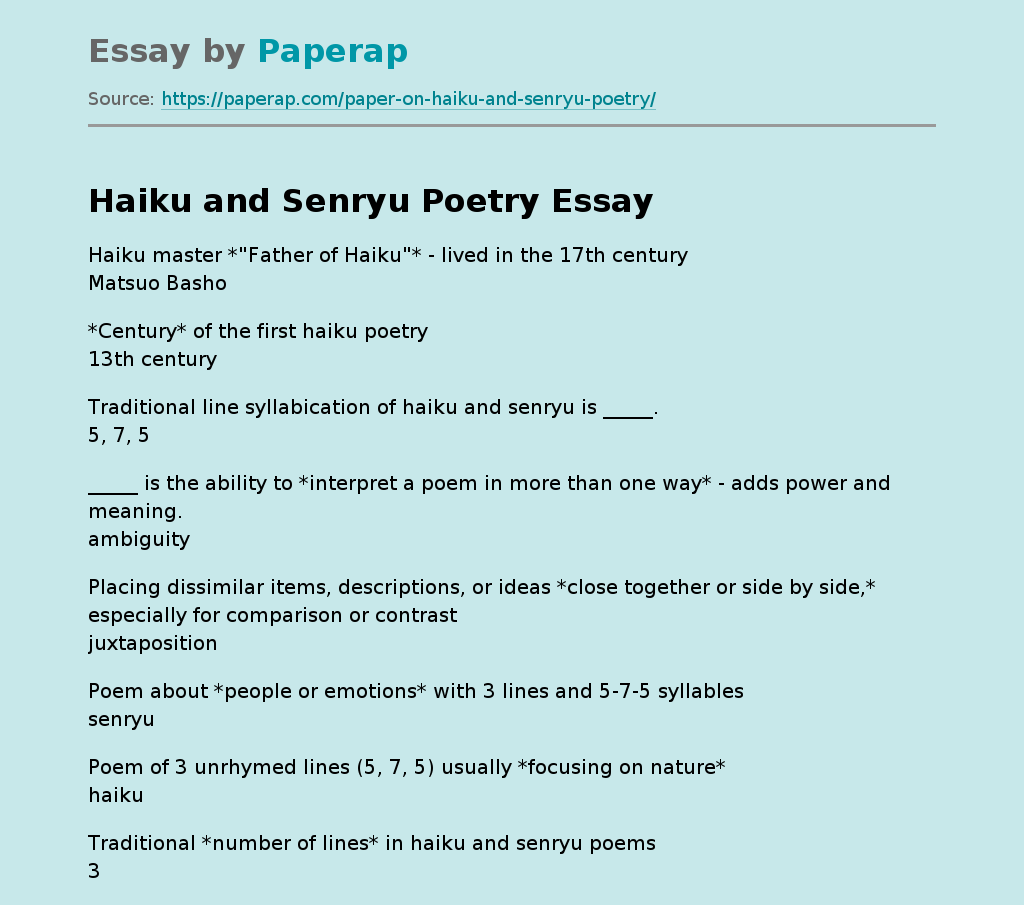Haiku and Senryu Poetry
Essay,
Pages 1 (210 words)
Views
16
Haiku master *”Father of Haiku”* – lived in the 17th century
Matsuo Basho
*Century* of the first haiku poetry
13th century
Traditional line syllabication of haiku and senryu is _____.
5, 7, 5
_____ is the ability to *interpret a poem in more than one way* – adds power and meaning.
ambiguity
Placing dissimilar items, descriptions, or ideas *close together or side by side,* especially for comparison or contrast
juxtaposition
Poem about *people or emotions* with 3 lines and 5-7-5 syllables
senryu
Poem of 3 unrhymed lines (5, 7, 5) usually *focusing on nature*
haiku
Traditional *number of lines* in haiku and senryu poems
3
Kind of poetry that can create a *snapshot* of life
haiku and senryu
An image, pared down language – cut down to *leanest state* is the ____ of a poem.
focus
Haiku and senryu are usually *(titled, untitled)*.
untitled
For what purpose is the *lack* of punctuation and capital letters used in haiku and senryu poems?
to create an effect
Haiku and senryu poetry *(does, does not)* rhyme.
does not
Haiku and senryu *(does, does not)* use names.
does not
A *seasonal word* that indicates the time of year being described in haiku and renryu
kigo
Haiku better appeals to *(logic, intuition).*
intuition
The *new rule* for writing haiku and senryu
17 or less syllables; 1-5 lines
Haiku and Senryu Poetry. (2018, Jan 02). Retrieved from https://paperap.com/paper-on-haiku-and-senryu-poetry/
